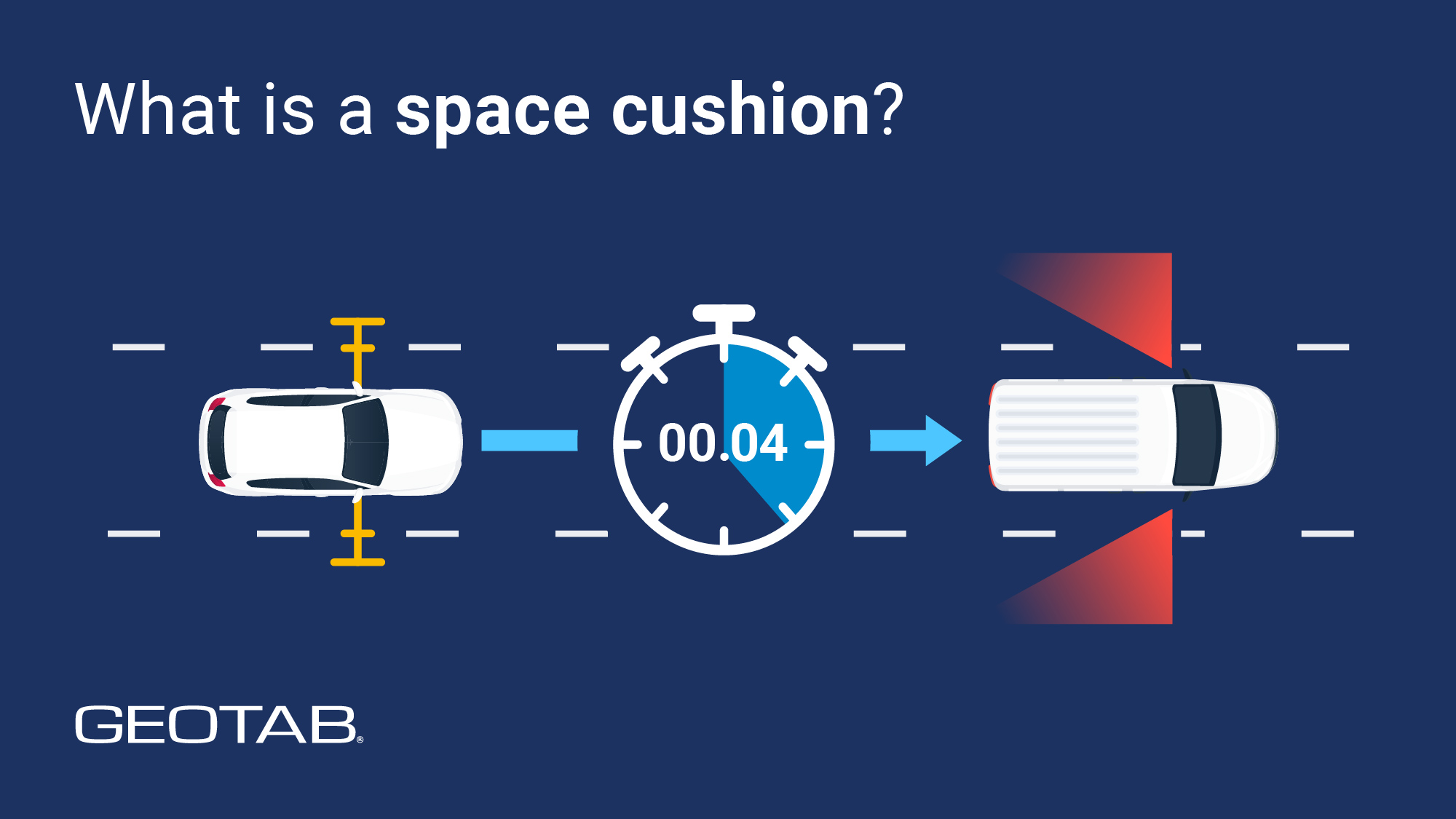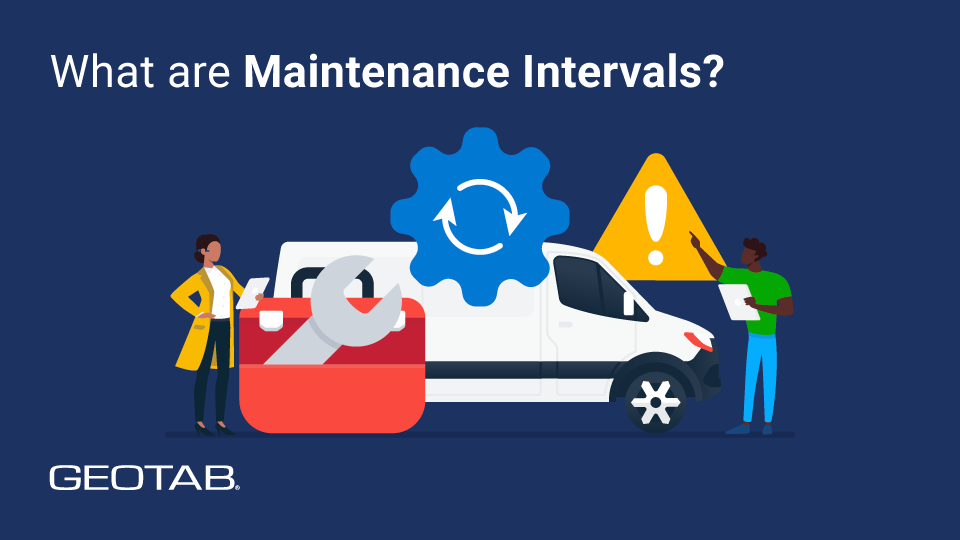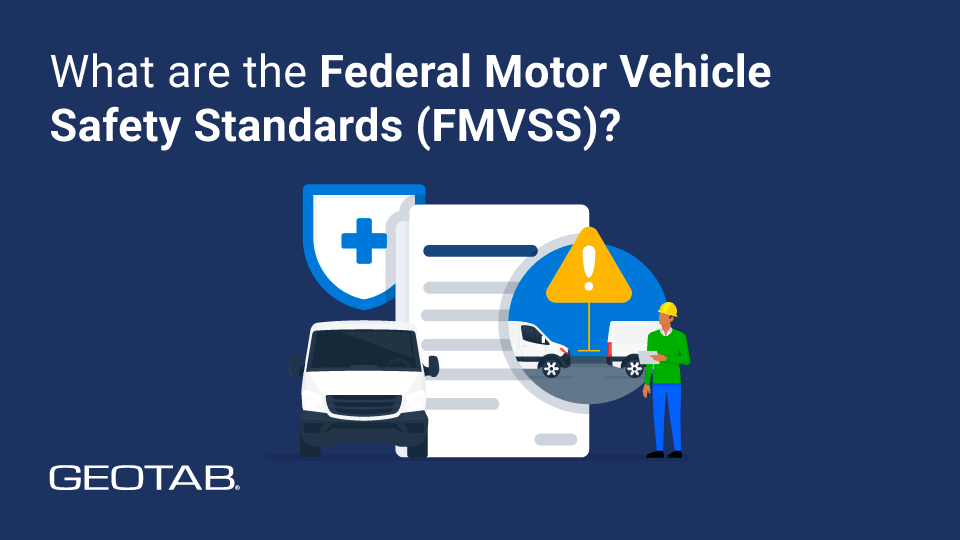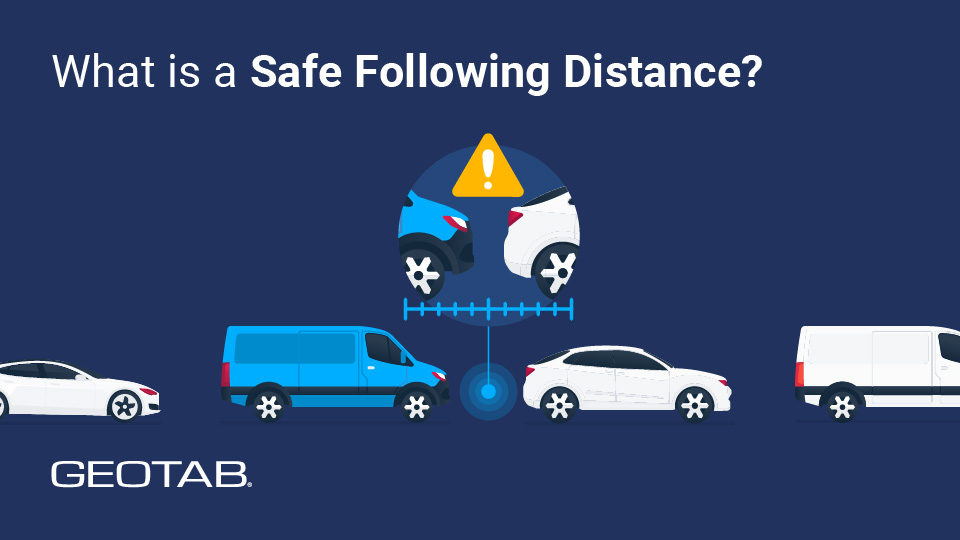What is a space cushion? A defensive driving guide for commercial drivers
March 19, 2025
•3 minute read

Key Insights
- A space cushion refers to the safe zone of the open road that drivers maintain around their vehicle to help avoid collisions and promote safer driving conditions.
What is a space cushion?
A space cushion refers to the safe zone of the open road that drivers maintain around their vehicle to help avoid collisions, improve reaction time, and promote safer driving conditions. By keeping a space cushion between their vehicle and others, drivers give themselves more time and room to react to changing traffic and road conditions. In this post, you will learn the importance of space cushions for drivers and fleet managers, how to calculate a space cushion and best practices for creating an effective one.
What are the benefits of creating a space cushion around your vehicle?
The primary benefit of creating a space cushion while driving is collision prevention due to increased reaction time. Maintaining a proper space cushion reduces the risk of rear-end collisions or sideswipes because drivers have more time to react to sudden traffic changes. Space cushions are important in commercial driving because the size and weight of trucks and buses make it harder for drivers to react quickly to sudden changes. By keeping a safe distance, commercial drivers can better anticipate sudden stops, lane changes or unexpected obstacles.
Another benefit of creating space cushions is increased driver visibility. Maintaining a proper space cushion reduces the risk of rear-end collisions or sideswipes because it creates extra space and gives drivers more time to react to sudden traffic changes. This visibility gives drivers more time to react to potential hazards such as vehicles merging, pedestrians or sudden stops.
Finally, space cushions give drivers more margin for error if they make mistakes while driving. Distracted driving contributes up to 20% of all car collisions. Therefore, creating a space cushion helps drivers protect themselves from having a momentary distraction turn into a delay in braking—and, in turn, a collision.
How to calculate a space cushion
Here are the three steps to correctly calculate a space cushion while driving:
- Start by calculating your following distance. You want four seconds of travel time between you and the vehicle moving ahead. Count seconds when the vehicle ahead of you passes a stationary object like a tree or lamppost. If you pass that same object in four seconds or more, you should have enough space to stop if needed. Increase this four-second space cushion to seven seconds if you’re driving a truck or other heavy vehicle.
- Next, maintain clear side and rear spaces. Check your side mirrors and make sure there’s at least one meter of space between your vehicle and others. Avoid driving in another vehicle’s blind spot. If you encounter a tailgating vehicle following too closely, change lanes and let that driver pass you.
- Finally, be extra careful about vehicle positioning during difficult driving conditions. On highways, maintain a greater space cushion when road conditions are slippery, or visibility is reduced. Uphill and downhill driving may require additional spacing, as larger vehicles take longer distances to stop when carrying heavy loads.
How to create a space cushion while driving
Here’s how you can create proper space cushions for the front, side and rear of your vehicle:
- Front space cushion: Use the four-second rule to ensure enough distance between your vehicle and the one ahead. When driving trucks and buses, leaving enough room for the longer braking distances required due to their weight is important.
- Side space cushion: Keep clear of other vehicle’s blind spots and avoid driving between clusters of vehicles. When possible, position your vehicle to have at least one open lane on either side.
- Rear space cushion: Though you can’t keep other vehicles from following too closely, you can create a rear space cushion by slightly increasing your speed, changing lanes, and slowing down to allow the tailgater to pass.
What the Smith5Keys say about space cushion driving
The Smith5Keys is a driver training system designed to promote safe driving practices, and the space cushion is a key part of it. Here are five principles the Smith5Keys system teaches about space cushion driving:
- Principle 1 – Aim high in steering®: Always be mindful of your surroundings by looking farther down the road. This helps you plan your next move and see nearby cars, helping you maintain a proper space cushion.
- Principle 2 – Get the big picture®: Stay alert to anticipate potential hazards such as merging vehicles or road obstacles. This allows you to adjust your space cushion early to avoid sudden movements.
- Principle 3 – Keep your eyes moving®: Active eye movement keeps you alert and helps you process information about changing traffic, weather, and road conditions. This allows you to adjust your space cushion as needed.
- Principle 4 – Leave yourself an out®: Maintaining a space cushion equips you with more options to change lanes and alter your speed to account for weather, road conditions and traffic flow. Remember, the safest position in traffic is the one with the fewest surrounding vehicles.
- Principle 5 – Make sure they see you®: Make eye contact with other drivers and confirm they know you’re there by using signals, horn and lights when needed to communicate your intentions. Studies show using headlights during daytime driving can decrease risk of collision by 5–10%.
Managing your space cushion while driving in adverse conditions
Space cushions are a useful best practice for any driving conditions, but they become especially important during tougher driving conditions. Here’s how to adjust:
- Driving in inclement weather: Increase your four-second space cushion to at least seven seconds in rain, snow or fog. Wet or icy roads require more braking distance for your vehicle to stop, so try to double your following distance.
- Heavy traffic: In congested conditions, it’s important to maintain as much space as possible to the front and sides because other drivers will be changing lanes more often. Be patient at all times. Avoid tailgating to maintain a safe following distance in case traffic ahead comes to a sudden halt.
- Narrow lanes and limited maneuverability: Slow down and maximize your space cushion when driving in tight spots like construction zones or narrow streets. Keeping the four-second distance may not be possible, but reducing speed will help compensate for the smaller space buffer.
Frequently Asked Questions
The front space cushion is generally the most critical because it helps drivers react more quickly to sudden stops or other changing traffic conditions. It’s also the easiest for drivers to control. However, maintaining a space cushion on the sides and rear is also essential for complete safety. By maintaining space cushions around all sides of their vehicles, drivers can help avoid collisions and maximize visibility while driving.
Table of Contents
Other Stories

What are maintenance service intervals?
April 9, 2025
5 minute read

What are the Federal Motor Vehicle Safety Standards (FMVSS)?
January 3, 2025
4 minute read

What is a safe following distance?
October 8, 2024
5 minute read